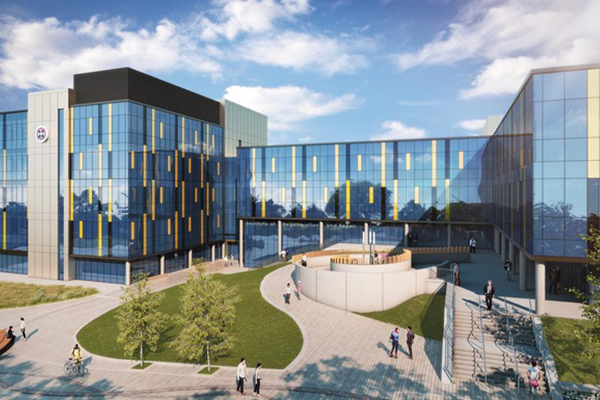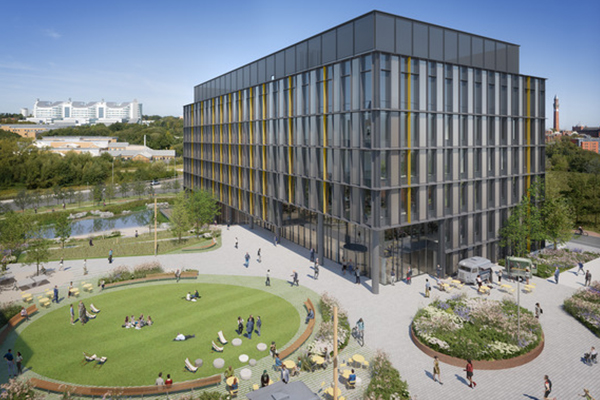Comment
Science and innovation: a forward looking sector
Science and innovation are high priorities for Government at a critical stage in planning for our national economic recovery. With new industries emerging, the sector is growing regionally and nationally and COVID-19 has only accelerated this further. As set out recently within the Government’s Build Back Better campaign, the pandemic has brought the industry to centre stage as a key contributor to the UK’s economic recovery. Senior Planner, Camilla Duckworth, explores how the industry is adapting to keep pace with the changing times.
Innovation thrives in times of crisis. This has been seen most apparently over the last year where businesses have adjusted to new ways of working in a virtual world whilst social distancing rules and restrictions are in place. Like most sectors, R&D, technology, and innovation companies have had to adapt how they work, with many in the sector pivoting their focus and research to aid in the fight against COVID-19.
Growth in the sector has quietly been happening here over the last decade, with the UK now considered to be a world leader in the life science, medtech, biotech, innovation and technology sectors. The pandemic has accelerated this growth, with the sector continuing to thrive over the last year.
The science and innovation sector has Government and public attention more so than ever before, and all eyes have been on it to help us get back to some kind of normality. This can be seen in the investment the Government is willing to put into the sector; with Research & Development (R&D) the only commercial sector to be referenced in the Government’s Planning Reform White Paper in 2020 [1].
However, for the sector to continue to develop, the way it functions and the spaces it occupies need to be fit for purpose and able to adapt, meeting evolving needs and new ways of working. Increased development of city centre Innovation Districts, a focus on amenities and wellbeing, and a drive towards sustainability are key components.
Innovation Districts
The majority of companies within the sector are located within science and technology parks, providing purpose-built office, laboratory and research facilities to meet specific research and development requirements. Traditionally, such parks have been located out-of-town, near a motorway or key vehicular route. This can often result in car dominant, underutilised, and disconnected development with limited amenities. Whilst these science parks have played a vital role in scientific development over the last 50 years, many companies are now looking for a different offering.
Over recent years, the importance of collaboration has increasingly been recognised. A new urban model termed ‘Innovation Districts’ has emerged, with science and innovation hubs relocating into the heart of cities. Many emerging Innovation Districts, such as the Innovation Birmingham Campus and the Edinburgh BioQuarter are looking at clustering networks of knowledge and innovation, alongside connecting to existing healthcare and educational establishments, facilities and businesses within cities.

Innovation Districts stimulate collaboration, a fundamental part of growth in this sector, working in partnership with local authorities, universities, and the private sector to enable the revival of urban centres. They provide facilities which support the whole evolution of a business, from start-up to growth and expansion. Being physically compact, easily accessible via a range of transport modes, and in close proximity to a mix of uses, businesses within them can connect with each other easier than ever. Allowing people to work and live in close proximity, and with a range of amenity facilities, will enable better work-life balance – something of increasing importance.
Alongside Innovation Districts, traditional out-of-town science and technology parks still have a role in supporting the future growth and development of the sector. To guarantee these parks meet the needs of the evolving sector and way we live, they will need to ensure they are no longer so inward looking. Emphasis on connectivity and collaboration, as well as a high quality amenity and wellbeing offer, will be key elements in competing with Innovation Districts. This can be seen in the aspirations and plans coming forward for the Gravity Smart Campus at Bridgwater, which has a strong focus on connecting the campus via a range of transport modes, and emphasis on high quality wellbeing and amenity space.
Amenity and wellbeing
For a sector where not all can easily work from home, and where collaboration is key to progression, it is vital that the offering, buildings, and places it occupies meet the needs of new ways of working and living.
Wellbeing and work-life balance is increasingly important to both employees and employers. Coming out of the pandemic, it is anticipated that both will be reluctant to go back to uniform ways of working. Greater flexibility, emphasis on providing positive working environments, spaces to support collaboration and wellbeing, and access to quality outdoor space will likely be requirements for science and innovation facilities.
With the clustering of knowledge and innovation businesses, there will inevitably be an element of competition for the best talent. A high quality amenity offering of a building, Innovation District or Science Park will, now more than ever, become a key selling point for attracting the best graduates, young professionals, and businesses.
Driving sustainability
Alongside improved working environments, there is a growing focus on the natural environment, and the impacts of development. There are increasing expectations from local authorities, the sector, and developers themselves, to provide more sustainable buildings and places.
Providing adaptable working spaces which meet the wide range of occupier’s needs and create sustainable communities will be a challenge for developers. It is, however, possible for this balance to be achieved, and this is being showcased by the recently approved Birmingham Health Innovation Campus (BHIC) proposals. The scheme aims to provide a high quality health innovation campus sitting at the heart of a critical cluster of health excellence, with links to the Queen Elizabeth Hospital and research facilities at the University of Birmingham. Buildings coming forward within the development will be BREEAM Excellent and look to cater for a range of health innovation companies at different stages of their lifecycle.

What next for innovation?
As we look to the future and returning to some kind of normality, the places and spaces occupied by the science and innovation sector need to ensure they are adaptable and align with changing ways of working; allowing the sector to continue to grow and thrive. In this context, new investment in the sector is likely to continue to have a focus on the following criteria:
- The presence of existing skills and talent within the local area (including other entrepreneurial businesses)
- A suitable local demographic particularly for life sciences and med-tech research & development
- Links to universities and academic institutions to support collaboration and symbiotic growth
- Proximity to major hospitals (for life sciences and med-tech)
- Proximity to other complementary uses, good housing, and planned investment in infrastructure
Innovation Districts, Science Parks, and the buildings within them, will also need to have an increased focus on providing businesses, and their employees, with an offering that goes beyond just a place to work. Their emphasis will need to be on creating a working environment focused on social interaction, collaboration and wellbeing, as well as creating sustainable buildings.
If you would like to discuss opportunities within the science, knowledge and innovation sectors, please contact Camilla Duckworth, Angela Reeve or Jadine Havill.
For more information on our work in the sector, please click here.
11 May 2021
You may also be interested in
News
16 April 2021
Birmingham Health Innovation Campus takes another step forward after planning permission granted
Acting on behalf of Bruntwood SciTech, Turley has secured planning permission for the Birmingham Health Innovation Campus. ...

